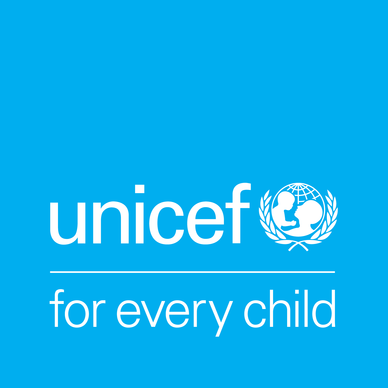26 October 2017 – The projected expansion in Africa’s child population will necessitate an increase of more than 11 million skilled education and health personnel by 2030, if it is to keep pace with the continent’s unprecedented demographic transition, UNICEF said today.
Africa’s child population is projected to increase by 170 million between now and 2030, taking the number of the continent’s under-18s to 750 million. This is according to Generation 2030 Africa 2.0: Prioritizing investment in children to reap the demographic dividend, a new report released by UNICEF on child demographics in Africa and their implications for the continent, and the world.
The report identifies three key issues for investment: health care, education, and the protection and empowerment of women and girls. Concretely, Africa will have to add 5.6 million new health workers and 5.8 million new teachers by 2030 to meet minimum international standards in health care and best practice targets in education due to the rapidly growing population.
“Investing in health, protection, and education must become an absolute priority for Africa between now and 2030,” said Leila Pakkala, UNICEF’s Regional Director for Eastern and Southern Africa. “We are at the most critical juncture for Africa’s children. Get it right, and we set the foundation for a demographic dividend, which could lift hundreds of millions out of extreme poverty, and contribute to enhanced prosperity, stability, and peace.”
The UNICEF report states that almost half of the continent’s population is under 18 years old, and children comprise the majority of the population in around one third of the 55 African Union member states. On current projections, the number of Africa’s children will top one billion by 2055.
“Imagine the potential of one billion children,” said Marie-Pierre Poirier, UNICEF’s Regional Director for West and Central Africa. “If Africa steps up its investments in children and youth now, transforms its education systems and empowers women and girls to participate fully in community, workplace and political life, it will be able to reap faster, deeper and longer dividends from its demographic transition.”
Critically, the Generation 2030 Africa 2.0 report also notes that Africa can reap a demographic dividend that will see per capita incomes increase by up to four-fold by 2050, if policies which promote job growth are made alongside international and domestic investment in Africa’s human capital.
Conversely, if investments do not occur in Africa’s youth and children, the once-in-a-generation opportunity of a demographic dividend may be replaced by a demographic disaster, characterized by unemployment and instability.
UNICEF recommends three policy actions to create the socio-economic conditions for Africa’s coming generations:
- Improve health, social welfare, and protection services to meet international standards; or beyond, in countries close to attaining them.
- Adapt Africa’s educational skills, and vocational learning system through curricula reform and access to technology, to enhance learning outcomes, so Africa’s children and youth can meet the needs of a twenty-first century labour market.
- Secure and ensure the right to protection from violence, exploitation, child marriage and abuse; and remove barriers preventing women and girls from participating fully in community, workplace, and political life with enhanced access to reproductive health services.
#####
Additional key facts from the report:
- The exponential change in demographics is being driven by three factors: more children living beyond their fifth birthday, high fertility rates and a surge in the number of women of reproductive age.
- Africa’s inhabitants will double from 1.2 billion in 2016 to 2.5 billion in 2050
- Nigeria currently accounts for 20 per cent of all of Africa’s births, and 5 per cent of the global total. Based on current projections, by 2050, 1 of every 13 births globally will occur in Nigeria.
- Between 2015 and 2030, Africa will see a 33 per cent increase in the primary school age population, from 189 million to 251 million. The highest increases will take place in West Africa (22 million) and Eastern Africa (18 million).
- Currently 40 per cent of Africa’s population lives in cities, compared to just 14 per cent in 1950. By the late 2030s, the majority of its population will live in urban areas. On current trends, by 2050 almost 60 per cent of Africa’s population will live in cities.
- Building on the remarkable gains for children in Africa over the past 25 years, the potential of one billion children is vast. These achievements, which should extend to future generations, include the halving of child mortality, the growing number of children attending school especially girls, and the rapid decline of child marriage.
- Educating women is one of the fastest ways to reduce poverty and fertility, according to UNESCO. In sub-Saharan Africa, women with no education have 6.7 births on average. This falls to 5.8 for those with primary education and to 3.9, for those with secondary education.
About UNICEF
Unicef is the world’s leading organisation for children, promoting the rights and wellbeing of every child, in everything we do. Together with our partners, we work in 190 countries and territories to translate that commitment into practical action, focusing special effort on reaching the most vulnerable and excluded children, to the benefit of all children, everywhere. Unicef UK raises funds to protect children in danger, transform their lives and build a safer world for tomorrow’s children. As a registered charity we raise funds through donations from individuals, organisations and companies and we lobby and campaign to keep children safe. Unicef UK also runs programmes in schools, hospitals and with local authorities in the UK. For more information please visit unicef.org.uk
For further information please contact:
Unicef UK Press Office on +44 (0)20 7375 6030 or [email protected]

